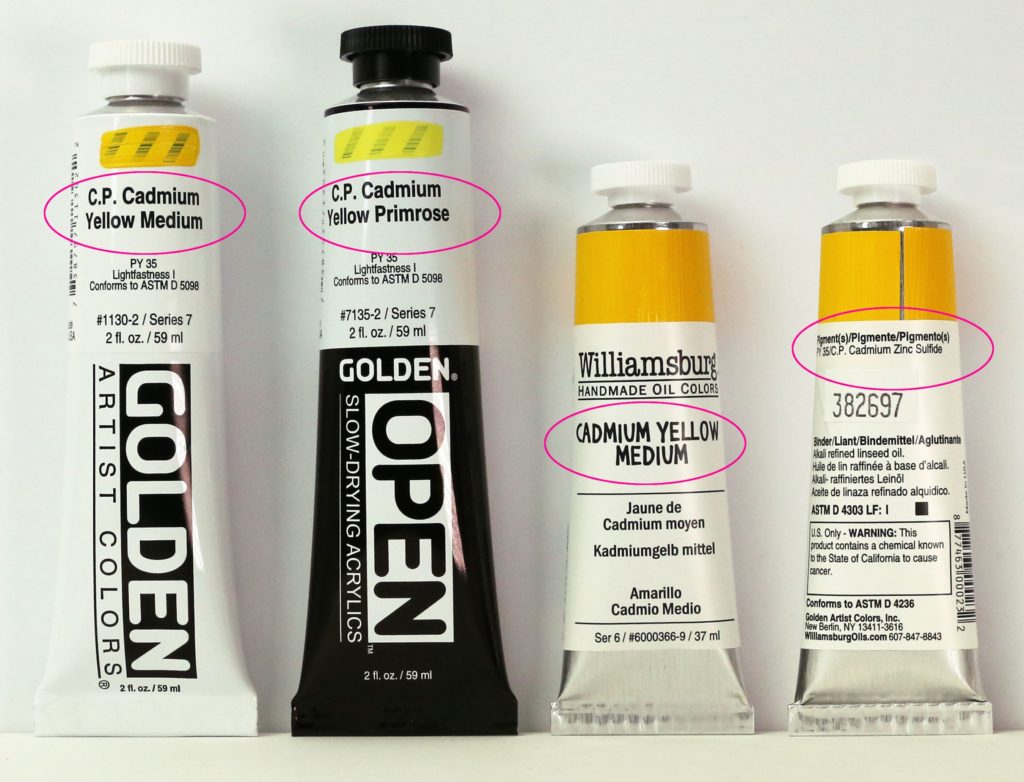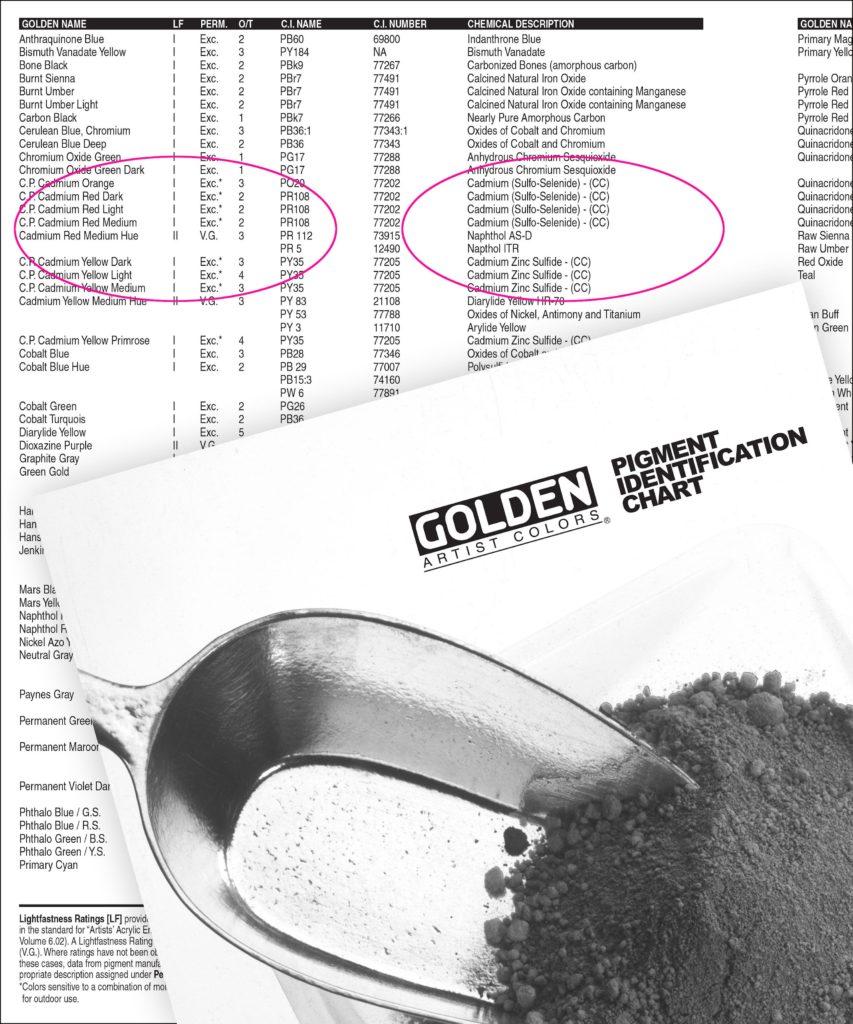
You may have noticed the letters “C.P.” preceding the names of our GOLDEN Acrylic Cadmium colors, or come across “(CC)” as part of the cadmium pigment listing found on the back of labels and in pigment ID charts. And…you may have wondered what they mean.
This has been a common question over the years and so we felt it was time to explain. First, both designations mean the same thing: they describe a grade that has a high concentration of cadmium and is considered the highest quality. The C.P. designation has been associated with both “Chemically Pure” and “Concentrated Pigment”. Which translation you come across will often depend on the source and context. In terms of “(CC)”, it refers to “Concentrated Cadmium” and was adopted by the ASTM (American Society for Testing and Materials) as a way to differentiate higher quality cadmiums from lesser quality cadmium-barium pigments.

According to ASTM, “(CC) Concentrated cadmium pigments may contain up to 15% barium sulfate for color control. Cadmium-barium pigments contain a much higher amount of barium sulfate.” You can differentiate these grades of cadmium pigments via their Pigment ID numbers and chemical descriptions. A C.P.Cadmium Red Medium, for instance, would have a listing like this:
PR 108 Cadmium Red Medium, cadmium-seleno sulfide (CC)
And the lesser variety like this:
PR 108:1 Cadmium-Barium Red Medium, cadmium seleno-sulfide co-precipitated with barium
Or for Cadmium Yellows:
PY 35 Cadmium Yellow Medium, cadmium zinc sulfide (CC)
PY 35:1 Cadmium-Barium Yellow Medium, Inorganic: cadmium zinc sulfide coprecipitated with barium sulfate
The designation “CC” will be found in any listing or pigment description where we have adopted ASTM labeling standards. While the same Cadmium pigments are used in our QoR Watercolors, you will not see the C.P. or C.C. designations on the tubes due to their small size, although you can find it on their Pigment Information chart.
In the end, whichever one of these two designations you see, either C.P. or CC, it is your assurance that we always use the highest grade of cadmiums in all of our cadmium colors, whether Acrylic, Oil or QoR Watercolor.
About Scott Bennett
View all posts by Scott Bennett -->Subscribe
Subscribe to the newsletter today!
No related Post

Good to know, Scott
I’d like to change my vote on Cads; I can live without them
Hi Bob!…It is hard to find an orange red that has the punch of Cad Red Light,…but the Pyrrole reds and oranges are very nice.
Thanks Scott!
You are most welcome Corrine!
I also thought the CP had something to do with being a less toxic option, less absorbed or less accumulating in the body if absorbed.
Hello Kim,
The “C.P.” designation does not have anything to do with being less toxic or less absorbed or less accumulating in the body if absorbed. This grade of cadmium contains more cadmium than the lesser grades, so in a sense, one could say the lesser grades are less toxic. Of course, no amount of cadmium ingested or absorbed through inhalation would be a good thing.
Cadmium pigments are not believed to transport across healthy, unbroken skin. The main concerns are ingesting or inhalation of the dry pigment or sanding dust. One should always protect oneself from accidentally getting the paint, dry pigments or sanding dusts into ones mouth, nose, lungs or into any abraded skin or cuts. If getting paint on your hands, one should not be touching food to eliminate any accidental ingestion. Some artists prefer to wear gloves to eliminate this potential.
Wonderful article! Thank you for explaining. Some of the cadmium colors are so beautiful that I can’t live without them. They are bright and radiant.
You are welcome Tina! We love the cadmiums too!
Take care,
Greg